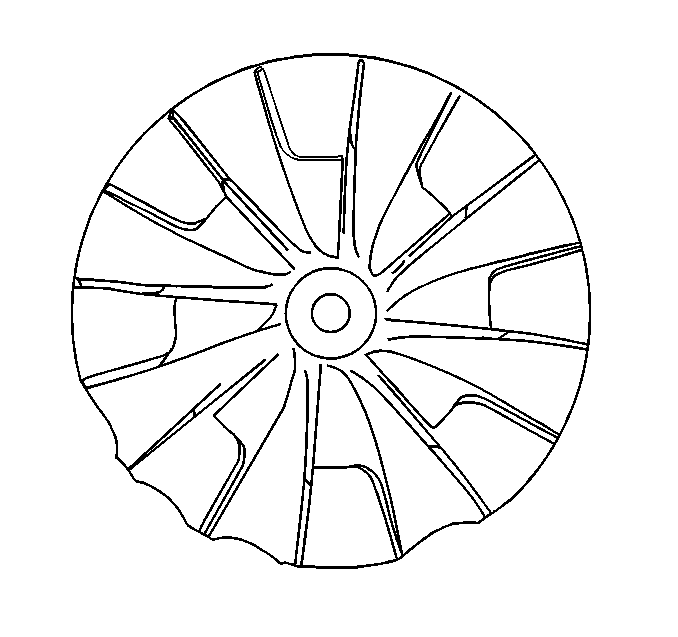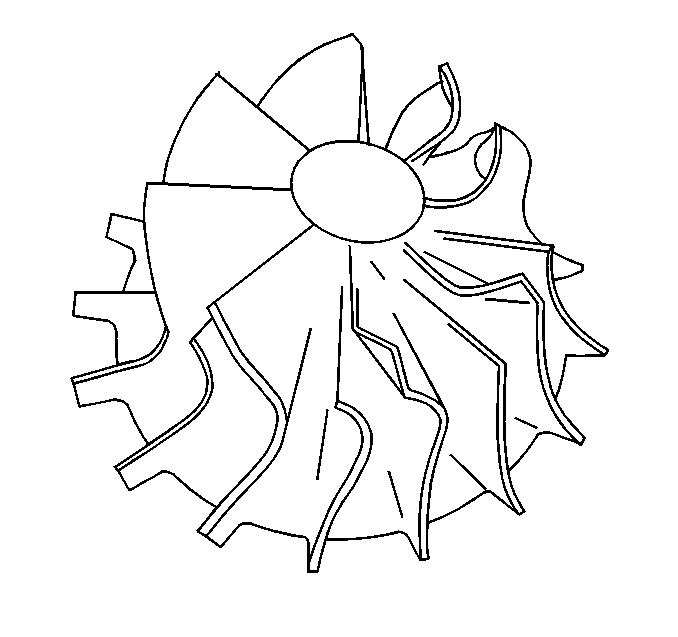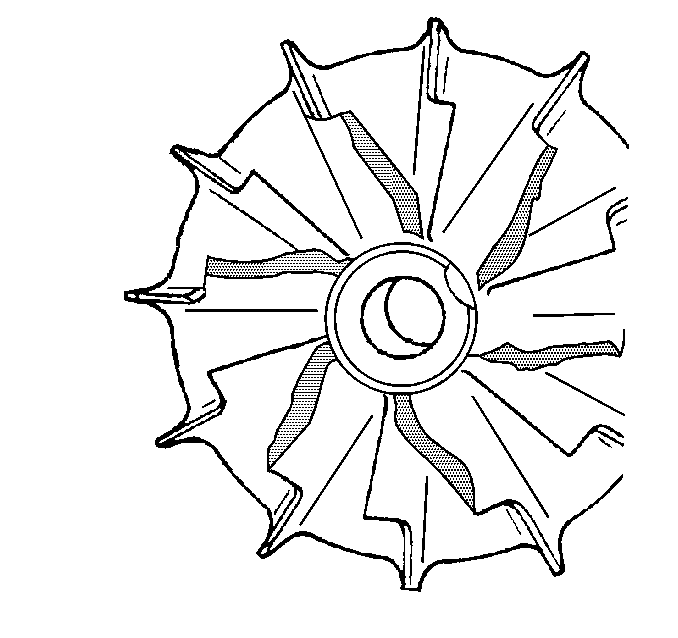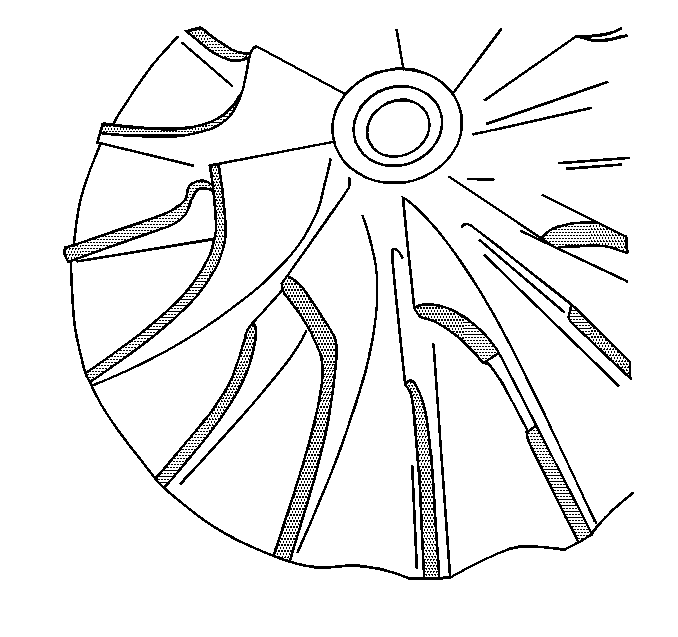Turbochargers are extremely reliable units. The majority
of inoperative turbochargers are caused by the following conditions:
| • | Oil lag (lack of oil flow) |
| • | Foreign objects or debris entering the turbocharger |
| • | Plugged or restricted air cleaner systems |
Problems that are frequently blamed on the turbocharger may be caused
by other engine components. Such problems may include the following conditions:
| • | Blue smoke (excess oil consumption) |
| • | Engine performance problems |
Completely inspect the turbocharger and all other engine components
that may cause similar conditions before replacing the turbocharger. Refer
to
Lacks Power, No Black Smoke at WOT
or
Lacks Power, Black Smoke at WOT
or
Turbocharger Noise
Use the following information to diagnose problems caused by the turbocharger.
If you cannot make a diagnosis from the following information, refer
to the tables listed immediately below:
If you determine that the turbocharger is the cause of the problem,
the turbocharger must be replaced as a complete unit. THE TURBOCHARGER IS
SERVICED AS A COMPLETE UNIT. THE WASTEGATE ACTUATOR MAY BE SERVICED SEPARATELY.
Check for the following noises:
Problem
| Action
|
High-pitched whine
| Check for an
exhaust leak or a leak in the air induction system.
|
Cycling up
and down in pitch
| Check for the following conditions:
| • | A blockage in the air inlet duct |
| • | A restricted air cleaner |
| • | A build up of dirt on the compressor wheel of the turbocharger
(oil film is normal) |
|
Sharp, high-pitched scream
| Check the bearings. The bearings may have
deteriorated and one (or both) of the wheels may be rubbing on its housing
(this results in blue exhaust smoke).
|
Normal Compressor Wheel

Damage by a Soft Object

Damage by a Hard Object

Compressor Blades Show Heavy Rubbing

Ensure that the following conditions do not exist on the compressor
wheel blades:
Check the housing for signs of rubbing.
Check the compressor wheel for a build-up of dirt.
Caution: Do not feel any components of the turbocharger while the engine is running.
Make sure that the turbocharger has stopped rotating and the turbocharger
and engine have cooled down before handling. Rotating parts and extreme heat
may cause serious personal injury if handled.
Important:
| • | The inside of the air intake duct (rubber inlet elbow), turbocharger
compressor wheel and housing can be quite oily due to the venting of the crankcase
vapors into the intake system. The oily condition is considered normal with
this engine application. |
| • | The crankcase depression regulator (CDR) valve does not prevent
oil vapors from entering the turbocharger compressor inlet system. |
| • | Carefully grasp the compressor wheel nut with your fingers and
rotate the wheel in a clockwise direction. The wheel should turn freely with
no signs of binding or scraping (housing contact). |
| • | Rotate the turbocharger while pushing in and pulling out on the
compressor wheel; the wheel should rotate freely with no contact with the
housing. |
| • | Carefully grasp the compressor wheel nut with your fingers and
rotate the wheel while moving the wheel up and down (radially). There should
be no compressor wheel to the housing contact. NOTE: AXIAL AND RADIAL PLAY
IS NORMAL EVEN ON A NEW TURBOCHARGER. If the compressor wheel comes in contact
with the housing, it will be very evident when rotating the wheel. The wheel
will drag or scrape on the housing surface and visual damage will be evident
on the wheel blades and the housing surface. |
| • | If the turbocharger does not pass any of these inspections, replace
the turbocharger. Refer to
Turbocharger
. |




